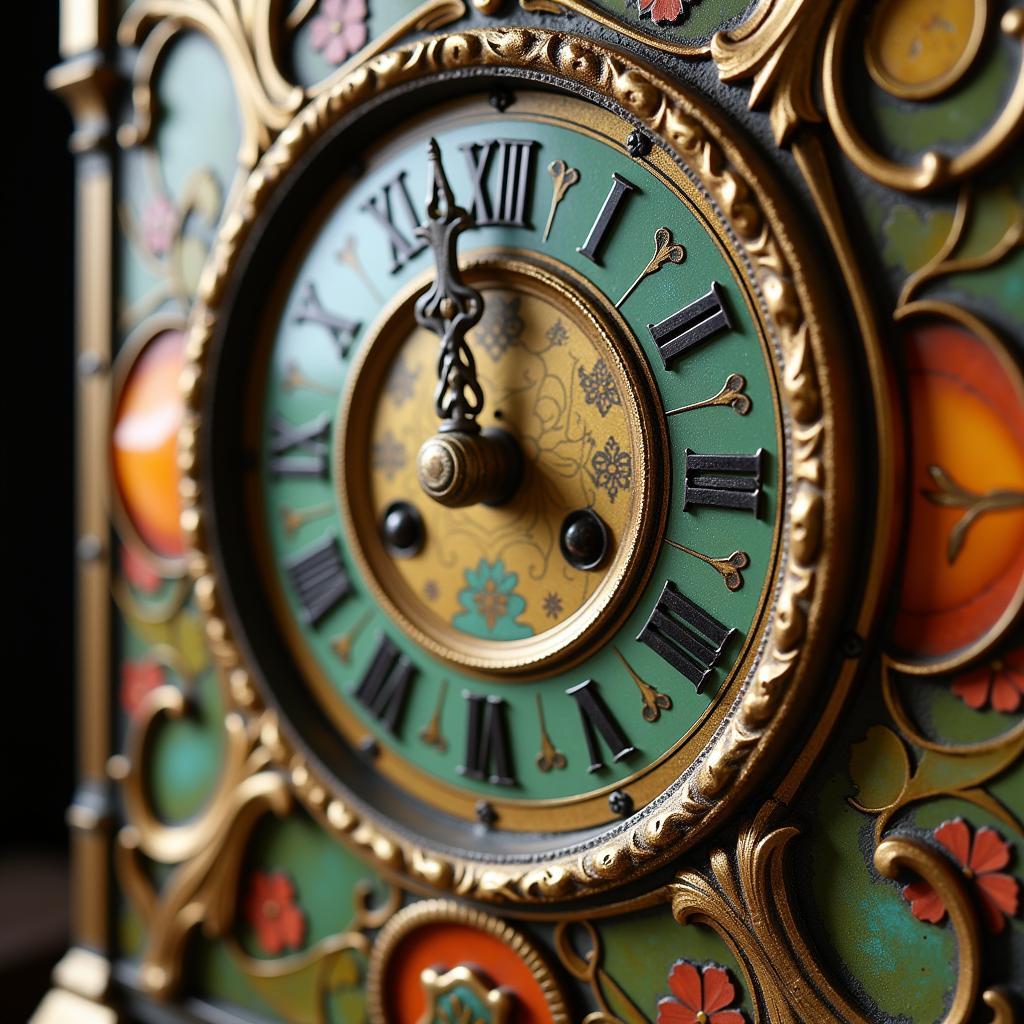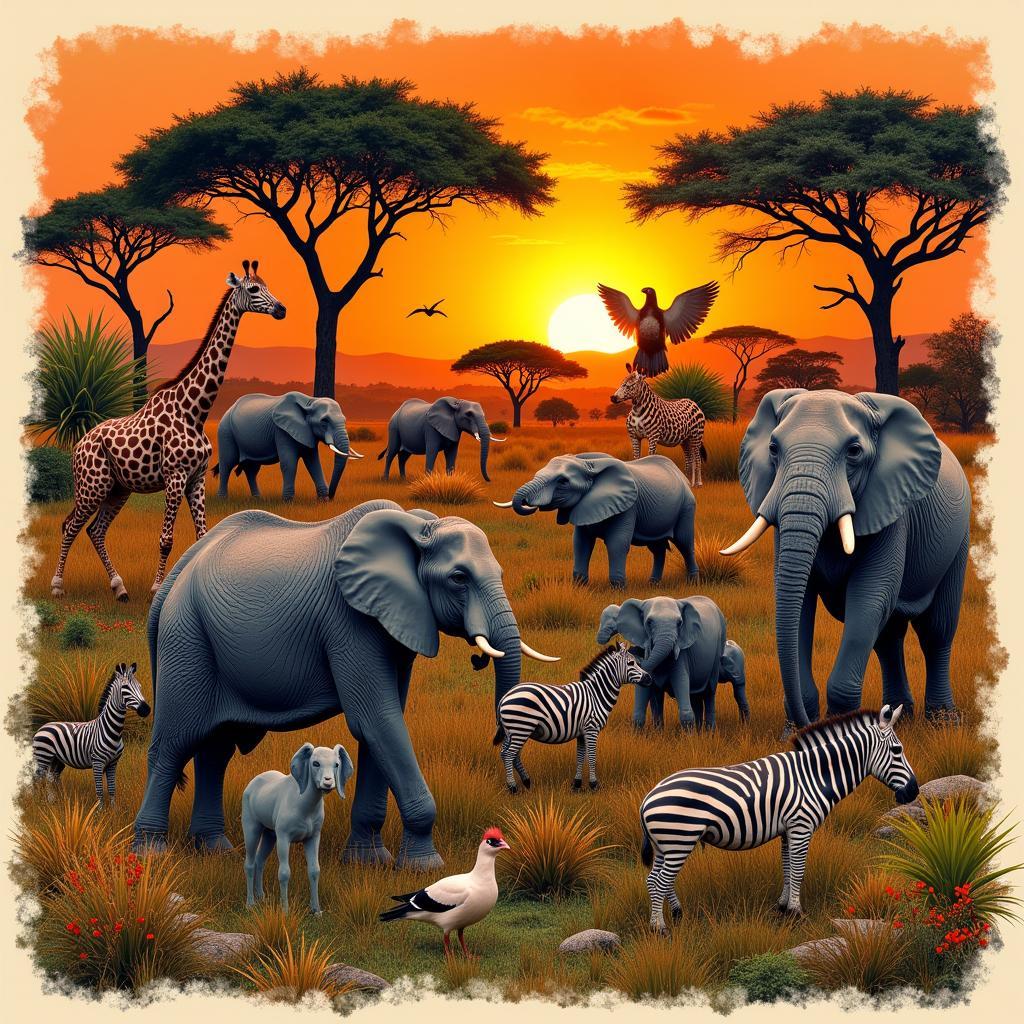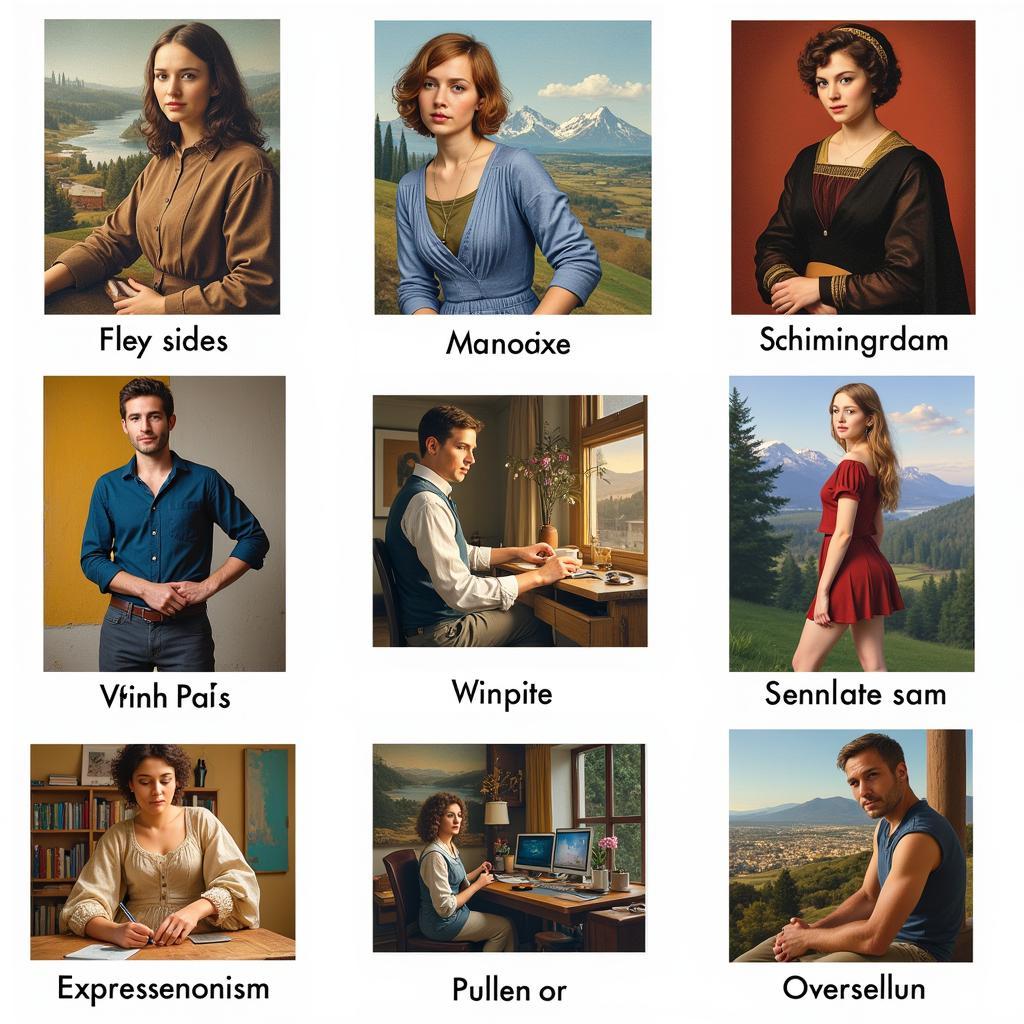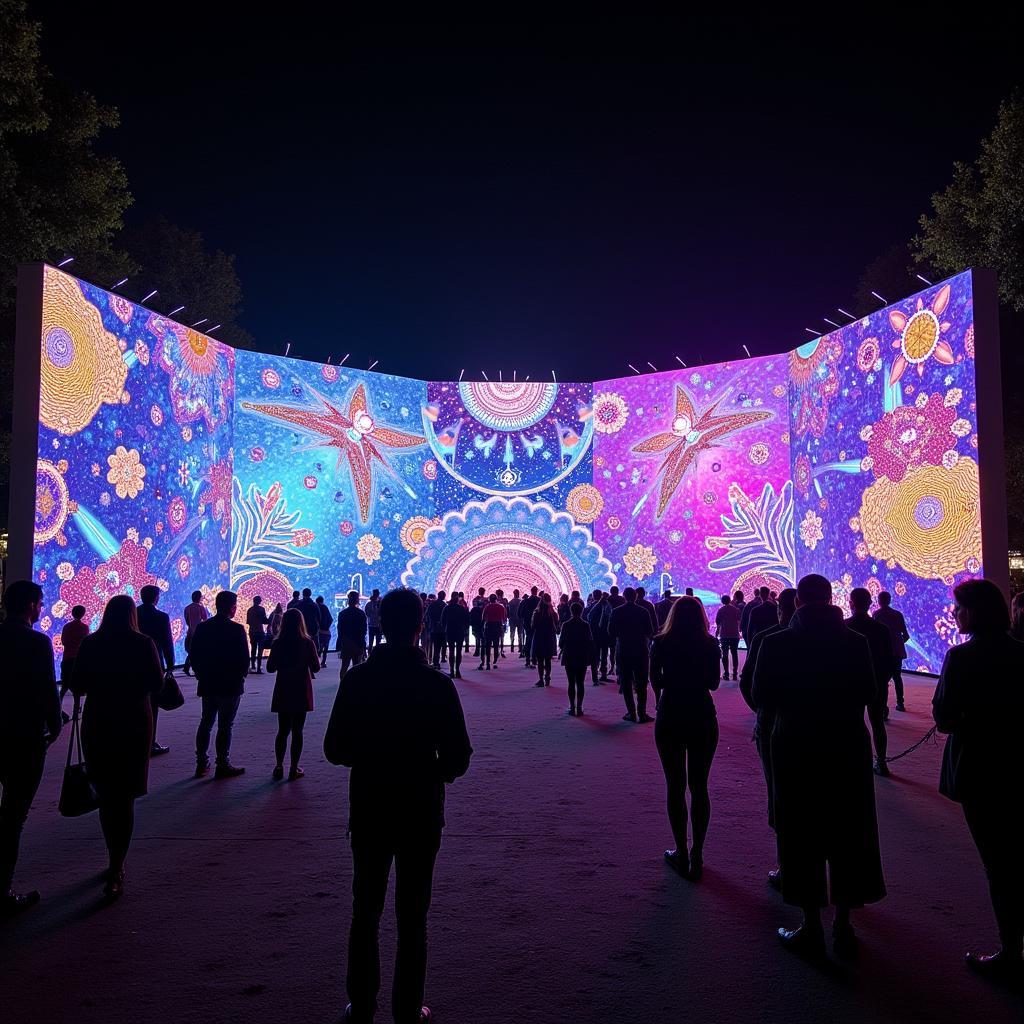Exploring the Depths of Textured Landscape Art
Textured Landscape Art offers a captivating blend of visual depth and tactile intrigue. This article delves into the world of creating textured landscapes, exploring various techniques, materials, and the evocative power of this unique art form. We’ll uncover how to bring your landscapes to life, adding dimension and character that transcends the flat canvas.
Understanding the Allure of Texture in Landscape Art
Texture in art refers to the surface quality of a piece, both visual and physical. In landscape art, incorporating texture can dramatically enhance the sense of depth, realism, and emotional impact. Imagine the rough bark of a tree, the smooth surface of a lake, or the jagged edges of a mountain range. By replicating these textures in your artwork, you create a more immersive and engaging experience for the viewer.
What makes textured landscape art so appealing? It’s the way it invites us to not only see but also feel the landscape. Texture adds a layer of complexity and intrigue that draws the viewer in, encouraging them to explore the nuances of the artwork.
Have you ever seen an abstract forest art piece with textured elements? The interplay of smooth and rough surfaces can truly bring the forest to life on the canvas.
Techniques for Creating Textured Landscapes
Numerous techniques allow artists to create texture in their landscape paintings. Some popular methods include:
- Impasto: Applying thick layers of paint to create a raised, textured surface. This technique is particularly effective for depicting rugged terrain or the texture of foliage.
- Dry Brush: Dragging a brush with a small amount of paint across the canvas to create a scratchy, textured effect.
- Sgraffito: Scratching through layers of wet paint to reveal the underlying color or surface. This technique can be used to create lines, patterns, or textures.
- Collage: Incorporating various materials, such as fabric, paper, or sand, into the painting to add texture and dimension.
Exploring Materials for Textured Landscape Art
The choice of materials plays a crucial role in creating textured landscapes. While traditional oil and acrylic paints offer a range of textural possibilities, artists can also experiment with:
- Modeling Paste: A thick, opaque medium that can be mixed with paint or used alone to create textured effects.
- Sand: Adding sand to paint can create a gritty, textured surface, ideal for depicting beaches or deserts.
- Fibers: Incorporating fibers, such as cloth or string, can add a unique tactile dimension to the artwork. Think of using delicate fibers for depicting flowing water or coarser fibers for representing rough terrain.
Choosing the right mtg art sleeves can also enhance the textural experience of your art.
Bringing Your Textured Landscapes to Life: Tips and Tricks
Creating compelling textured landscapes requires more than just applying techniques and materials. Here are some tips to help you bring your landscapes to life:
- Observe and Study: Spend time observing real-world landscapes. Pay close attention to the textures you see and how light interacts with them.
- Experiment with Different Techniques: Don’t be afraid to try different techniques and materials to find what works best for you.
- Consider the Light Source: The way light falls on a textured surface can dramatically impact its appearance. Pay attention to the direction and intensity of light when creating your landscapes.
A mini art canvas can be a great starting point for experimenting with texture.
Conclusion
Textured landscape art allows artists to capture the true essence of the natural world, going beyond mere representation to evoke a deeper emotional response from the viewer. By mastering various techniques and experimenting with materials, you can create landscapes that are not only visually stunning but also rich with tactile intrigue. Explore the endless possibilities of textured landscape art and unlock a new dimension of artistic expression.
FAQ
- What is the best paint for textured landscape art? Both oil and acrylic paints are suitable, depending on your preference.
- Can I use found objects to create texture in my landscapes? Absolutely! Incorporating natural elements can add unique character to your work.
- How do I prevent cracking in impasto paintings? Using a flexible painting surface and allowing each layer to dry thoroughly can help prevent cracking.
- What is the difference between visual and physical texture in art? Visual texture refers to the illusion of texture, while physical texture is the actual surface quality of the artwork.
- Where can I find inspiration for textured landscape art? Nature itself is the best source of inspiration. Observe the world around you!
Remember, for all your art supply needs, check out art graf graphite. It’s a great resource for artists.
You might also be interested in autumn fox art for more inspiration.
When you need assistance, contact Phone: 02462573573, Email: [email protected] Or visit: Savico Megamall, 7-9 Đ. Nguyễn Văn Linh, Gia Thụy, Long Biên, Hà Nội 10000, Việt Nam. We have a 24/7 customer service team.



